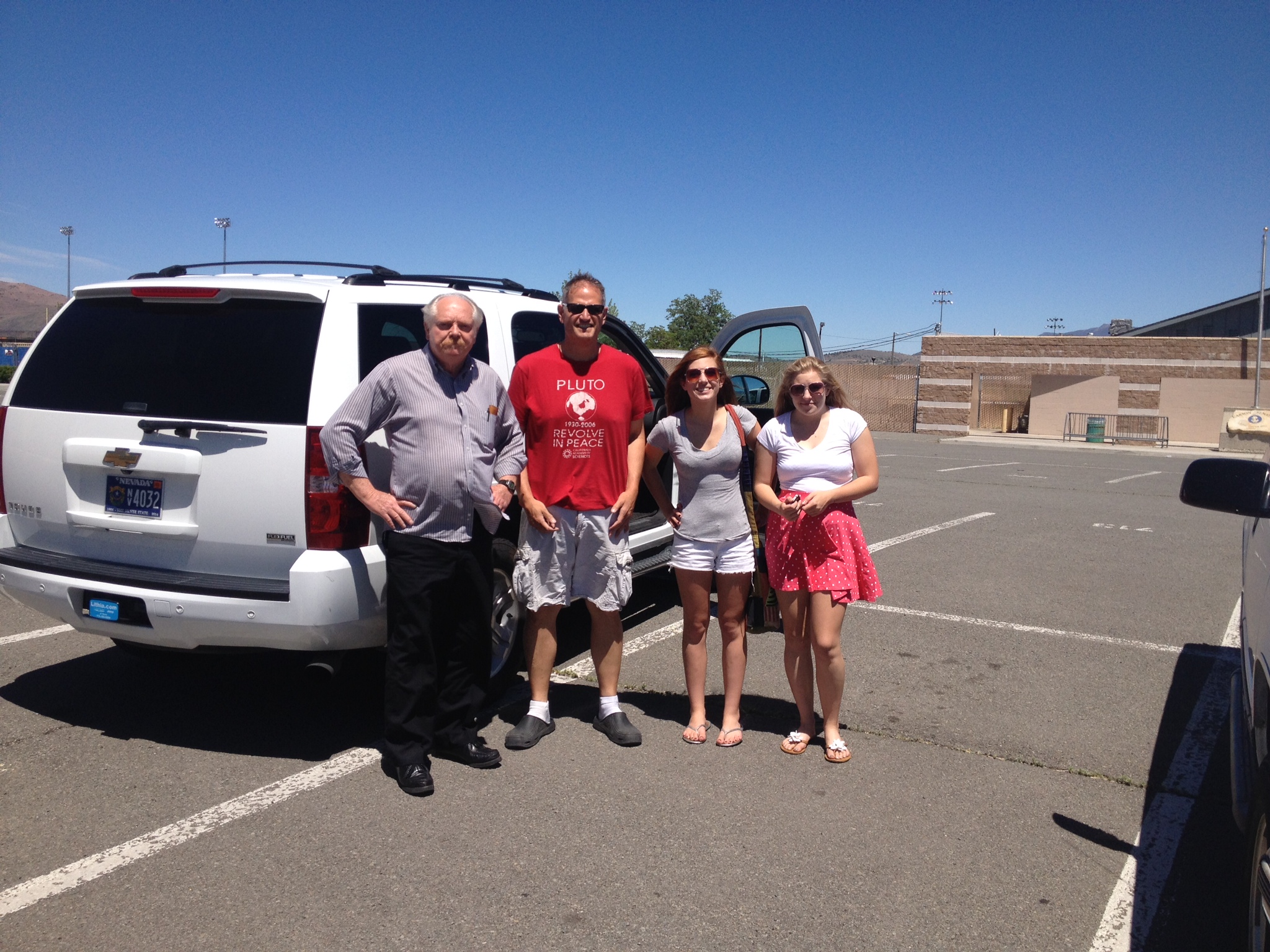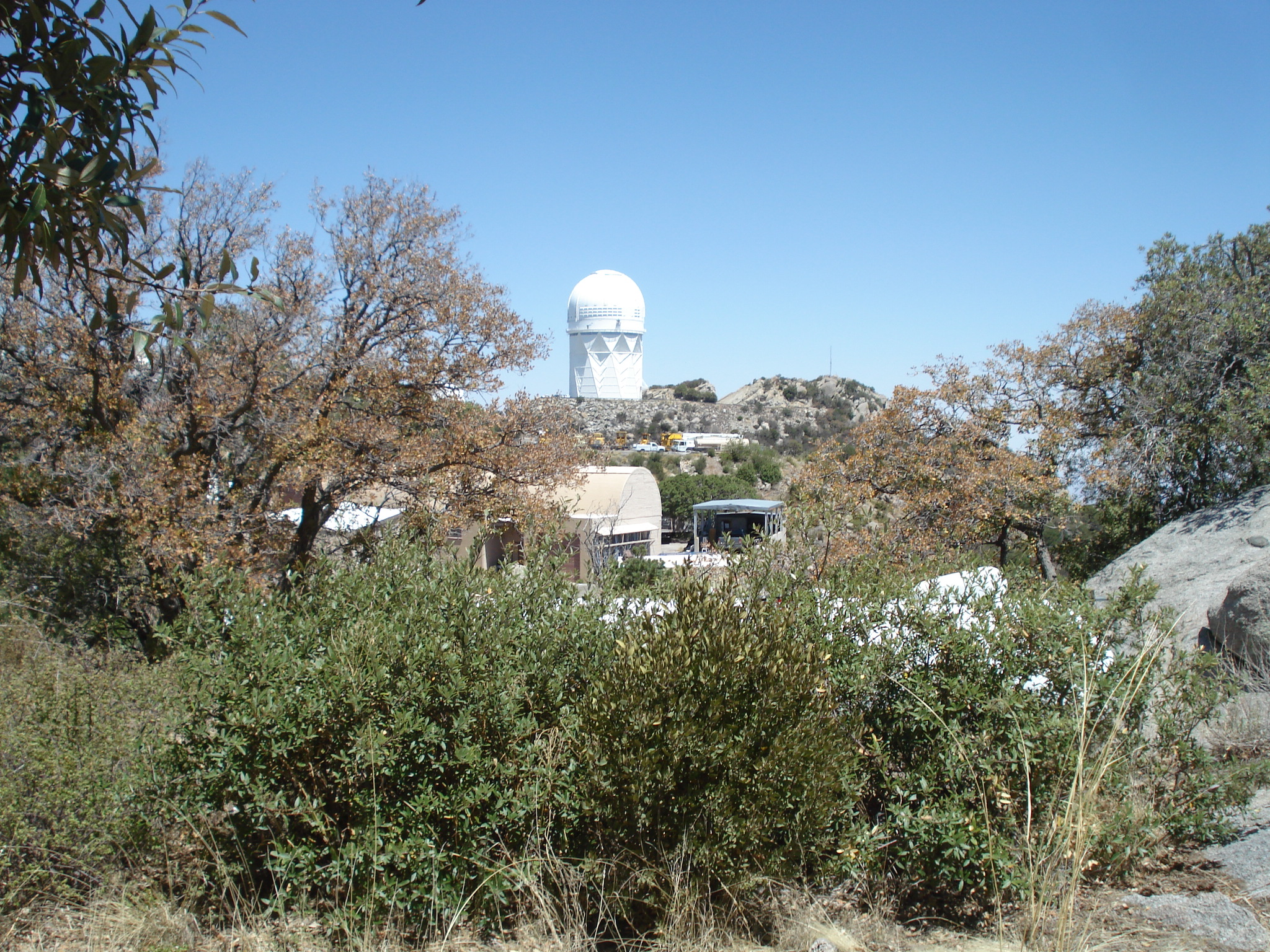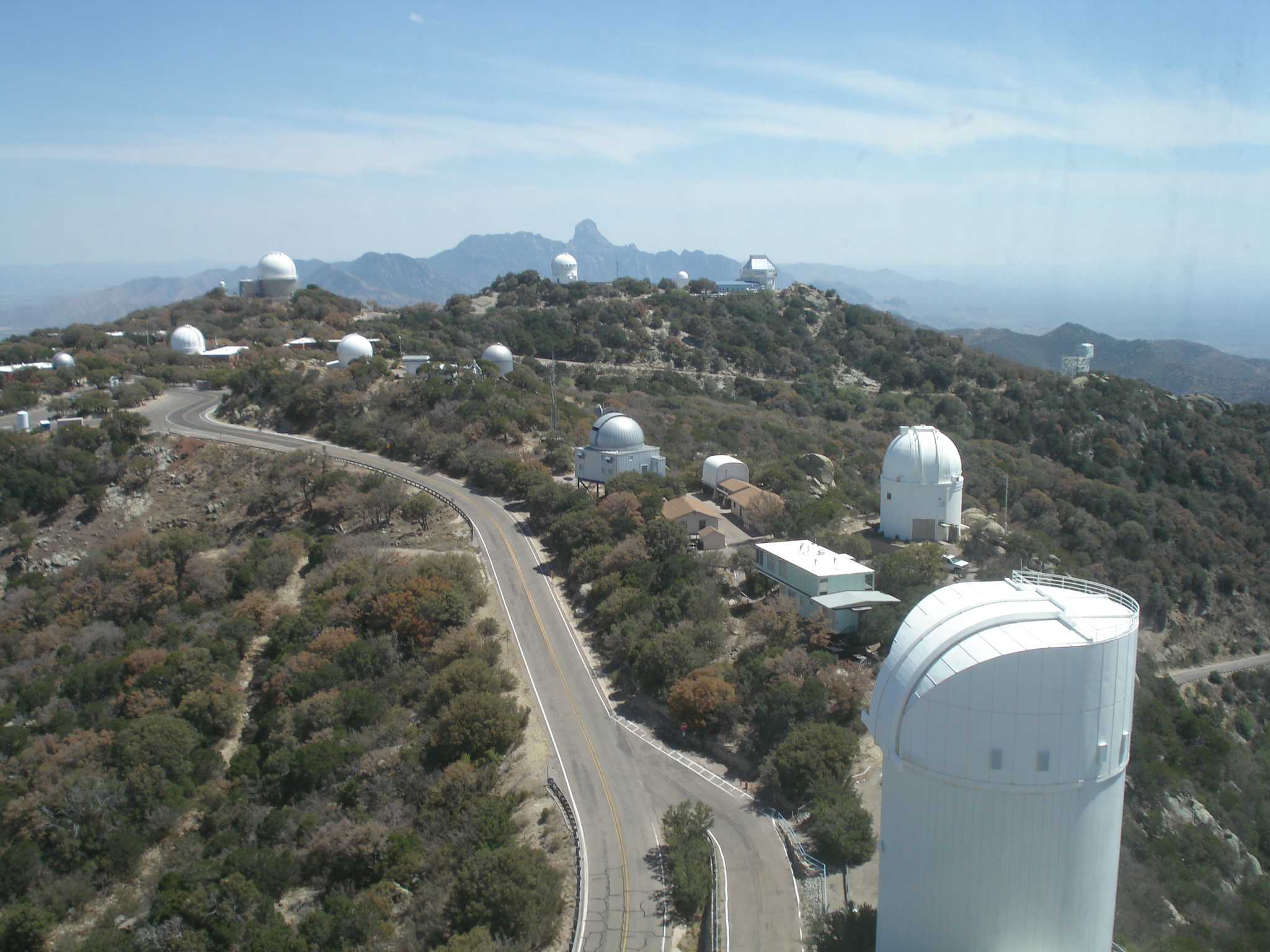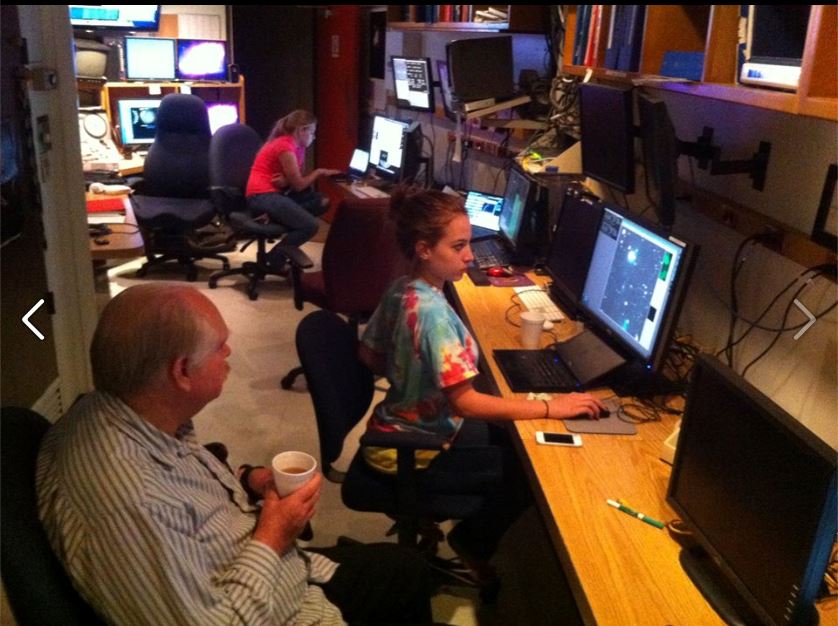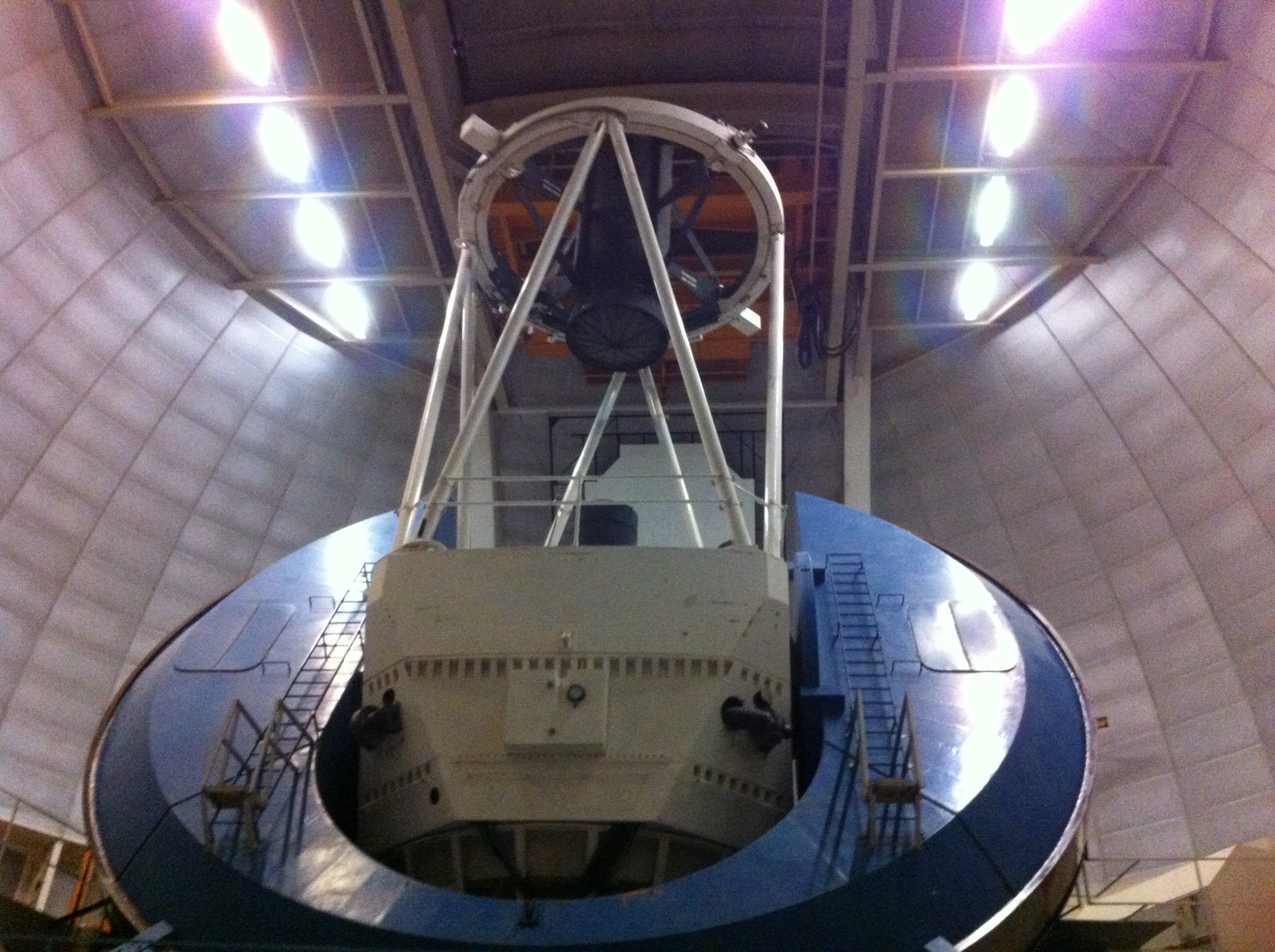As a person who has been an active amateur astronomer and telescope owner for a very long time, I’m still trying to put our time spent at Kitt Peak into perspective. This visit was a great privilege. The postings by Shelby and Lake were by necessity an overview; after all we were there to “work”. For those who have visited Kitt Peak and those who have not had the opportunity, I wanted to share some of the details as I experienced them.
Marc had mentioned months ago that he would like for members of the RECON team to experience and participate in an observing run if arrangements could be made. I was surprised and thrilled when he later asked if I would like to be included. Some questions are easy to answer, some seem impossible, but this was an easy one. At this early stage I didn’t say a word to anyone other than my wife for fear of jinxing things. It wasn’t easy dealing with people and not saying, “I may be going to Kitt Peak”. Arraignments were more complicated on the teacher/student side as the time of the trip was during finals. Finally the details were worked out; Jim, Shelby, Lake and myself would be going to Kitt Peak for a three night run with the 4 Meter Mayall telescope. Marc had requested observing time at the end of September and received approval one month later.
We flew out of Reno on Monday afternoon and were picked up by Marc in Phoenix. The drive to Kitt Peak took about 2 ½ hours and it was dark when we arrived. My initial thought on finding out it would be dark was “Too bad, we won’t see much until tomorrow”. It turned out just the opposite. As we got close to the facility Mark went to parking lights and started pointing out domes as we slowly entered a world I had read about but never experienced. As you strained to see, an apparition would slowly appear, a dome of serious size silhouetted by a starry sky; this was the perfect introduction.
Our first stop was at the admin office where Marc introduced us to a couple people he knows in the profession. Waiting for each of us was a key card for our room, and lest we forget why we’re there, a key to the 4 Meter. After dropping our bags off in our rooms we set up a CPC11 and observed under a beautiful sky until 0300 or so to start acclimating to the hours we would be keeping. It was time to call it a day; we would meet again at 1100 that morning. The dorm room was comfortable and very suitable for our purpose.
Walking outside that first morning was another experience; beautiful sky, comfortable temperature, wonderful mountain environment, and the views. A few steps from our dorm room you could look to the North and see the 2 Meter dome, and beyond that the 4 Meter. This was a good way to start the day. We were to meet for lunch and get observing details from Marc.
The dining room was a good example of being organized for observing. There were maybe six tables in the main area and a separate dining area used by many of the staff. In order to help the dining room plan for meals we would use a computer to input our name, affiliation (observer), and indicate which meals we would be having for the day. Hot food was available for 2 hours per meal; let the server know your choice from a small list of entrees and help yourself to the salad bar, which included fruit and deserts. In addition to the serving times the dining room was always open with drinks, fruit, rolls, cereal, etc. available; a necessity due to schedules. There was a separate terminal for ordering a night lunch, which was prepared by the kitchen staff and placed in a large cooler. This was typically a very generous sandwich and salad but could also be something for the microwave. After dinner when we headed for the observatory we would pick up our night lunch along with snacks. I would be surprised to hear of any observer going hungry there.
An interesting aspect of our meals in the dining room were the people Marc knew, astronomers from different organizations and Kitt Peak support staff. I believe there were about 20 observers for the different telescopes when we were there, plus day visitors and groups at the public observatory during the night. Our schedule kept us busy so there wasn’t time for a lot of exploring. Marc gave us a walking tour, which included our first trip to the 4 Meter.
The admin office, dorms, and dining room are centrally located and the walk to the 4 Meter is maybe 15 minutes. On the way up we passed the concrete casting that shows the size of the 4 Meter mirror, past the 2 Meter dome, and on up to the 4 Meter. The view from there was beautiful, and looking south you had a great view of the facility. Walking around the observatory afforded a view of the mountain and surrounding countryside and there were always a few dust devils visible in the distance. The observatory rises 18 stories above the parking lot. There is a visitor’s entrance with history, photos, and a view of the telescope. In addition to buses that bring tour groups up during the day, people are free to drive up to the dome, park and enjoy the view. We used the observer entrance, taking an elevator up maybe five flights then using a freight type elevator with sliding gates to go another five or so flights before entering the control room.
The control room measured roughly 10 by 30 feet. As you walked in, to the left there was a small refrigerator, microwave, coffee pot and sink. Along the right wall was a couch and room length bench with several monitors. This was for the observers, and was a busy table after we added a few laptops. At the far end of this table were 3 monitors we would use to collect our data; 1 to operate the camera, 1 to provide certain exposure data to be recorded as an independent record, and 1 with the raw image. Opposite the data collection station was the telescope operator’s station. This was a mix of old and new technology and surely not as easy to use as the operators made it appear. Above the operator’s station were two windows looking out to the telescope.
One of the first things Marc did was give us a tour of the telescope, and what a tour it was. As was typical for large telescopes of its time it is in a horseshoe mount. In this type mount the right ascension axis is a large partial ring open on one side (horseshoe) with supports tapering back to what must be a major thrust bearing, all aligned with the North Celestial Pole and supported on special bearings for smooth, precise rotation. The telescope is mounted inside this structure and moves north/south on its declination axis. The moving parts weighs 300 tons, with the mirror being over 16 tons of the total. The engineering, mechanics, and precision required are something to contemplate. We were able to check it out from all angles and rap it with our knuckles to make sure it was good and solid, and it seemed to be. There are all sorts of information and photos online that anyone interested can check out.
After we had checked out the telescope and observatory Daryl Willmarth gave us a safety briefing, there is no shortage of ways to be injured here. In addition to the vertical hazards there are countless pieces of equipment, both fixed and portable, that could trip a person or give a nasty bump to the head. Common sense is ones best defense here but the fact that most of out time was spent in low light or no light conditions with a small red light to get around meant taking it easy. We were to keep our key and a small light with us when in the dome. The observatory is a maze of small rooms or spaces; some doors unlocked but most locked; a few spaces were lighted, a few had night lights, and many were dark. In the event of a fire the emergency staircase was interesting. After following exit arrows on the floor for a short distance you come to a set of stairs, 14 flights. You could look down, down, down the center of the stairs. Shelby and Lake took the stairs a time or two but the rest of us weren’t quiet as adventuresome. They were having problems with the fire alarm system so we had a chance to walk these stairs two or three times, but not the entire length before the alarm was silenced. Daryl was also our engineering support but the equipment was trouble free during our visit.
As Marc is experienced with the requirements for effectively and efficiently using the 4 Meter, to us it seemed straightforward to obtain data. We were there to do astrometry on TNO’s — the determination of precise positions to improve orbital elements for more accurate determination of stellar occultation’s by these objects. Marc had made all preparations and loaded the data necessary for the telescope operator to locate and guide on the selected target. Over years Marc has developed his own techniques and software to obtain and process the data for this application. We were able to collect data both Tuesday and Thursday but lost Wednesday to clouds. Shelby and Lake collected and processed almost all the data, Jim and I did just enough to learn how it was done and earn the thinnest of bragging rights for using the 4 Meter. The camera was called Mosaic, with two rows of four chips, each 8 megapixels. This 64 megapixel image measured 36 by 36 arc minutes and was taken using a VR filter.
To begin an observing run, Marc would decide on the target and give us the name and length of exposure; the telescope operator would move to the target using the information uploaded earlier by Marc, select a guide star and start guiding. While this was being done we would enter the name and length of exposure in the camera control window. When the operator announced guiding we would hit enter on the camera control window to start the exposure. While this exposure was being made Marc would select the next target, which both the operator and us would enter in preparation for the next exposure. We would also record certain information displayed on one of our monitors for a written record — length of exposure, RA, Dec, time shutter opened, HA, etc. As soon as the exposure was complete the operator would immediately move to the next target, announce when he was guiding, we would start the exposure and Marc would call out the next target. I don’t know details but the software Marc developed would record the data and it was available for processing. This was repeated from astronomical sunset until astronomical twilight to get as many exposures as possible. On the cloudy night we were in the control room all night in case it cleared but we didn’t get a single exposure.
As soon as an exposure was complete Marc would start turning the raw image into one from which useful data could be obtained. Again I’m not certain of all details; the image would be processed with darks to reduce electronic noise and flats to clean up defects in the optical train. After a couple hours we could re-image the same fields and begin our search for movement. The two images would be registered/aligned and any object on both exposures would show as white; any object moving between exposures would show as red on one exposure and cyan on the other. It was then time to start paring and measuring. Using the method Marc had developed it was a matter of a couple mouse clicks once we had determined pairs. A click of the mouse would mark the initial location and another click would mark the later location. My guess is that there would be a plate solution and then using the time from the two exposures the separation in arc seconds and rate in arc seconds/hour would be calculated and displayed/recorded. Each pair on a given plate would receive a number for identification. Remember that each exposure was made up of eight individual images and each had to be examined. Using the mouse you would select a portion of one image and mark any targets, select another portion and mark any targets, until you had completed the eight parts of that image. It can’t be overstated that the software made it easy as far as we were concerned.
The target was located near a designated location on the exposure and the balance of the exposure was fertile ground for detecting objects for the very first time. Many of the objects we flagged had probably never been observed before. Due to time constraints most detected pairs will not be critically analyzed; Marc is looking for movement of 3-arc seconds/hour or less for follow-up. Each target has to have its center precisely fixed before it can be used to improve the orbit and generate a more accurate ephemeris to serve RECON, and others. I know we’re all looking forward to the results of the observing run but it will take time for Marc to work this into his schedule.
I hope the errors in my understanding of this observing run are few and small, but our time was too limited to get into everything and I wanted to share as best I could the experience.
In addition to Marc and John, the following made this experience possible:
-
Dr. Lori Allen, KPNO Director, approved our joining Marc
-
Daryl Willmarth, Observing Supt, engineering support
-
Krissy Reetz, Observing Asst, telescope operator
-
Dave Summers, Observing Asst, telescope operator
-
The entire KPNO staff

